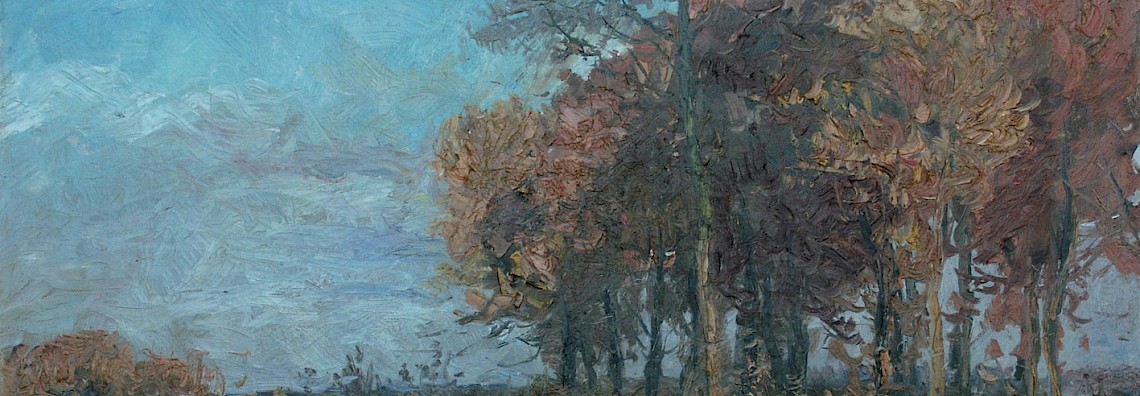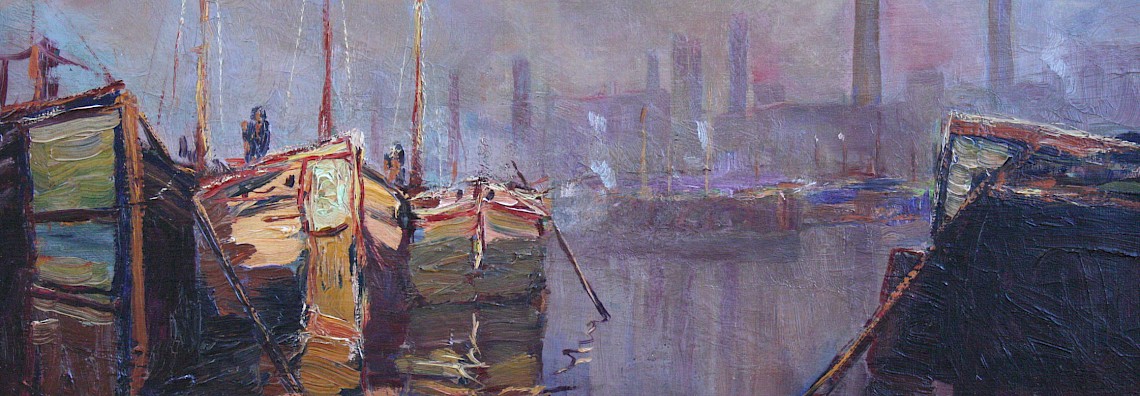Goals
Our aim is to protect not only the members of the Liège school of landscape painting, but collectors too. Because of the economic decline of recent years, market performance has failed to live up to the hopes generated during the boom years 1985-1995… But as the artists gain in international renown, the lost time will be made up.
The dates 1880 and 1950 are not restrictive. Léon Philippet, Gérard-Jonas Crehay and Adrien de Wittepainted landscapes before 1880. Jacques Couturier, Félicien Absil, Luc Faisant and Roger Faufra did so after 1950.
The love of nature which united those painters is their common denominator, beyond the genres, tendencies or political and philosophical affiliations, commercial considerations or views of art critics, or the academic bodies. Some kind of power pushed those artists to offer the energy they had inside them - their love of the land (the terroir) - to all those who, many years later, share the same ideal.
That movement, initiated by Evariste Carpentier, and continued by Richard Heintz, was recognized by Jules Bosmant back in 1930; it is now complete.
Richard Heintz, a perfect example of the rebel pupil going on to outdo the master (E. Carpentier), brought in his wake all the disciples of the Liège school of landscape painting. Even today, Liège still has a lively landscape painting scene. Many artists seek, and we can say this without any sort of pejorative connotation, to emulate Richard Heintz and Auguste Donnay and continue to produce a wide variety of works.
Given this diversification of genres, a study of contemporary painters would require a perilous exercise of selection. There are today lots of landscape painters who work "in the manner of...", and painters who innovate in different registers. Let's proceed with caution!
This dictionary is meant to be an anthology of Liège landscape painting between 1880 and 1950, and not of Liège painting of all times and all genres.
Only a few contemporary artists are included in this book because they brought a touch of extra originality, a further dimension to the structure of landscape painting, but these are exceptions that prove the rule.
This publication will strengthen the links between the members of the Liège school of landscape paintingand those who appreciate its work.
The Liège school of landscape painting is a reality of which we became a part once upon a time and in a certain way. A "collector-distributor" is how Joseph Philippe described this activity. So what!
Who still thinks that an art dealer is incapable of passion? Should the desire to do something useful and join the beloved artists through a shared passion really cause art dealers to lose all notion of self-interest? Is this impossible? Can anybody nowadays become entrapped in the utopia of stereotyped roles; art dealer, not art dealer? No role is cut in stone. Life is a role play, and we have to reinvent our role every day.
But, of course, art-lovers can be attracted by other means than dealing in pictures. Successive generations of art historians have written theses at the University of Liège about the Liège painters, art critics have filled the arts columns of newspapers with articles since the beginning of the twentieth century, books have been published on the most famous Liège painters over the last decades, the reserves of our museums are bursting with hidden treasures. All this bears witness to the richness of Liège landscape painting and the interest it generates. Some financial institutions have woken up to the fact and have in the past provided some generous sponsorship.


